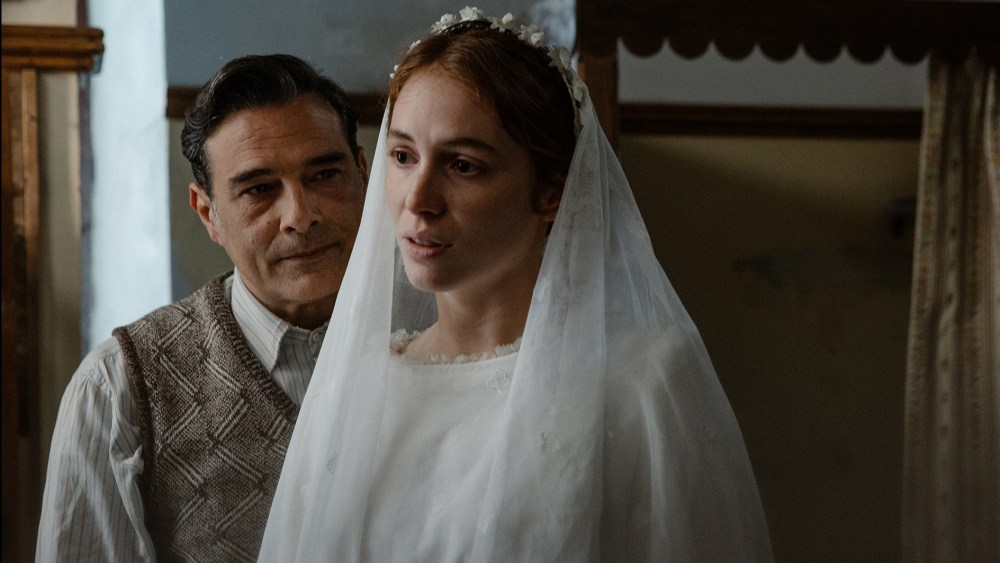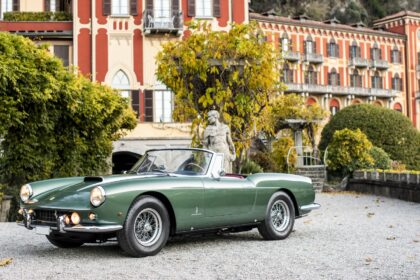The Italian period drama “My Place Is Here” is released in Italy by Adler Ent. on May 9 and will be sold in Cannes by Beta Cinema. Variety speaks with the film’s directors, Daniela Porto and Cristiano Bortone, and debuts the trailer (below).
‘My Place Is Here’ is set in the years after the end of World War II. In Italy, women have recently gained the right to vote, but in Calabria, a conservative rural region in southern Italy, men are still in charge.
An unmarried single mother, Marta, who is deemed to have disgraced her family, is promised as a wife to an elderly farmer. While preparing for the wedding, Marta meets Lorenzo, the village’s openly gay wedding planner. He encourages her to broaden her horizons and take typing lessons at the local Communist Party office in order to find work. Here she meets communist activist Bianca, who offers another role model to the downtrodden women of her village.
Ludovica Martino, best known for the Italian version of “Skam,” plays Marta, and Marco Leonardi, whose credits include “Cinema Paradiso” and “Once Upon a Time in Mexico,” plays Lorenzo.
The film is based on the novel by Porto, who adapted it into a film together with Bortone. The film’s release in Italy follows the huge success of ‘There Is Still Tomorrow’, which grossed $39 million. That film also tackles the subject of patriarchy in post-war Italy.
Porto tells Variety that both her parents were from Calabria, and she went there every summer as a child. The idea for the story came about when her mother told her about an openly gay man in her village who helped women organize their weddings. She imagined what the relationship between one of these women and this man would be like and from there the story began to unfold.
The film is particularly relevant now, Porto says, because of the rise of the right in Italy, but also in other countries, which threatens to roll back women’s rights, especially their access to abortion.
Another aspect of the film is its depiction of poverty and a lack of opportunity in southern Italy during that period, when hunger was common and illiteracy prevented people from improving their chances in life. Porto did extensive research while writing her novel and used photographs from the period to guide the costume choice and overall look of the film.
This portrayal of life as it was then contrasts with the “sweet image” of southern Italy often seen in TV dramas, says Bortone, which portray it as “romantic” and “beautiful.” He adds: “Life was really bad.”
Italians need to be reminded how hard life was in southern Italy and how that led to migration to the north of the country and to other countries such as the US, Bortone says. This is particularly relevant today when immigration is such a toxic issue in Italian politics. “We have forgotten that part of our past. It’s important to keep that emotion alive as we approach the present,” says Bortone.
Despite the negative image of the Communist Party that has come to the fore in recent decades, the film is seen as having tried to “improve conditions” for Italy’s poor, Porto says. However, in terms of its treatment of women, it appears to be little better than the right-wing parties, in that it did not want women to escape their oppression. Their attitude was, ‘You can vote, but remember your position is in the family,'” she says. “1946 in Italy [the year after women’s suffrage]For me it was a very important year, because there were great expectations, but many of them were not realized.”
Bortone says they tried to avoid stereotypes in the film. For example, when portraying gay characters, they avoided portraying gay men as funny or flamboyant. The inspiration for Lorenzo’s portrayal in the film was Marcello Mastroianni in Ettore Scola’s “Una giornata particolare,” where he plays a gay man as “elegant, decent and full of dignity,” says Bortone.
What is striking about the film is that although Marta is helped by others, she ultimately frees herself. “It has to be Marta’s decision to take a stand and say, ‘Okay, I can’t count on the Communist Party, the Church or Lorenzo. If I want this, I have to do it myself,” Porto said.
The film’s production design and costumes help highlight the poverty of the people, Bortone says. “The film was shot in a small town in Calabria called Gerace, which is actually quite untouched and we were fascinated by the tonalities there, and we tried to create a world where there wasn’t much color, and somehow it was everything in the tonality of mud and earth and stone, including the clothes, because when you look at the photos of that time you don’t see the sparkling cheerful flowery colors that come later. Then everything was very brownish. The people were farmers; they were workers.
“The other aspect that was interesting was the lighting. At that time, there were no street lights or electricity in most homes, so lighting followed the cycles of the day. In short, when it is dark people go to sleep and when the sun rises people go to work, and the lighting consists mainly of oil lamps that emit this specific glow, but also hard lighting such as the fireplace. Also, all the interiors were dark because the fireplace made everything dark, with the smoke and dust. So we tried to get away from a TV-like polished romantic idea of southern Italy.
The only time that color appears in the film is with Lorenzo’s flowers and the scarf Marta received from her boyfriend, as well as the flowers that bloom in the spring. “When I make a film, I try to use color in a narrative way,” says Bortone. “So basically everything is quite gloomy and dark in the beginning, and also the color correction is a bit cold – like bluish, and slow when she thinks she’s improving her life and maybe falling in love with a new guy again. suddenly the flowers come out, spring comes, and then it goes back to its kind of dark motif.



















